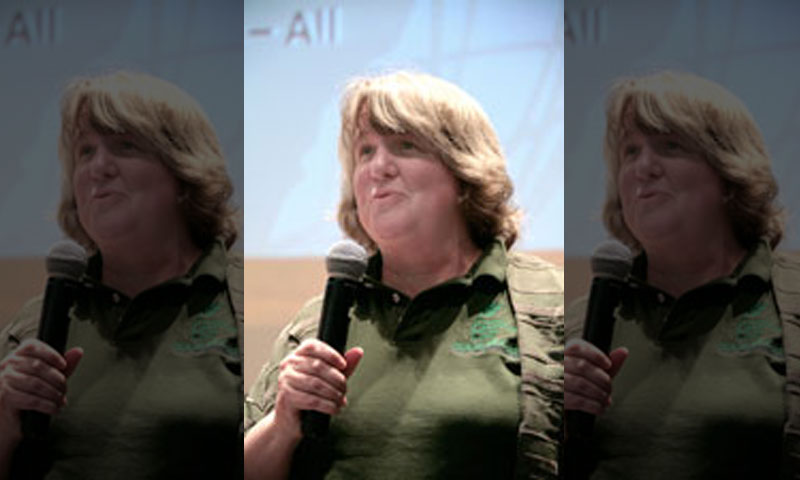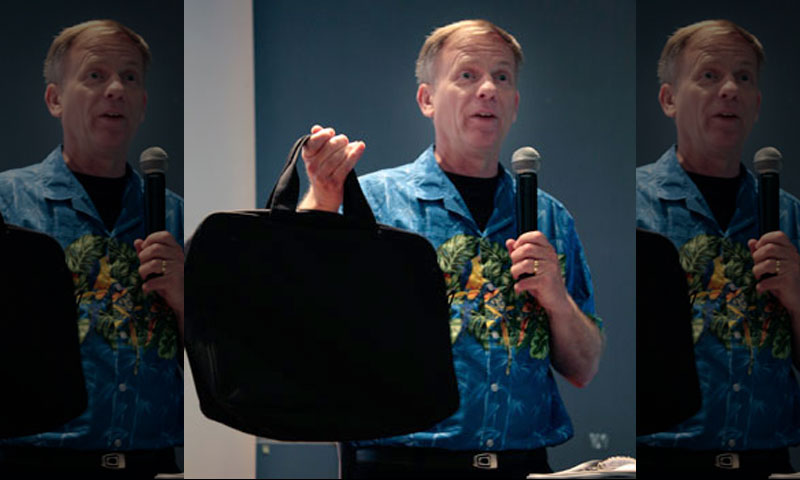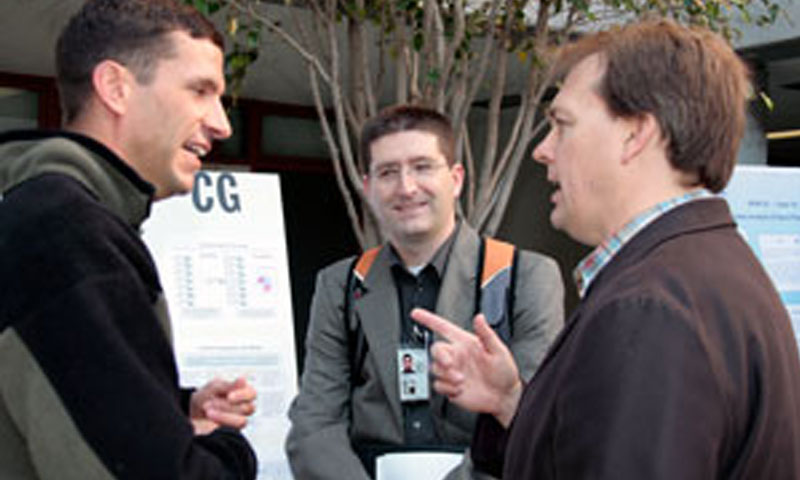Since it became the official hub for the International Data Farming Workshop (IDFW) in 2006, the Naval Postgraduate School’s Simulation Experiments & Efficient Designs (SEED) Center for Data Farming has hosted IDFWs each spring in order to bring together experts and students from around the world to focus on very basic questions to complicated issues. The 20th IDFW took place at NPS March 22-25.
“What makes it separate from a think tank is we do a lot of experimentation with computers – we call them computational experiments – and what makes these really special is we have clusters of computers that allow us to run thousands and thousands of computational experiments,” says IDFW leader and NPS Research Professor Tom Lucas, shown at right. “And that’s what we call data farming … growing data with computers. And to do experiments you couldn’t do in the real world.”
The goal of the IDFW is to use the data farming resources such as high performance computing, data analysis and collaborative environments to run their model, or question, hundreds or even thousands of times in order to identify patterns or non-linear data. Some models may take several hours to run through only once while others run through thousands of simulations per day. Using the consistent data, the most likely outcomes can be analyzed from a number of different scenarios, often with minute changes to the details. “A small change in the initial conditions may mean a large change in the final result,” explains SEED Center Executive Director Gary Horne, “one event can totally change everything.”

Dr. Susan Sanchez, Co-Director of the SEED Center for Data Farming.
Varying from issues relating to U.S. Customs & Border Protection (CBP) to Improvised Explosive Device (IED) scenarios, to the effective use of Transformable Crafts, the workshop aims to run millions of scenarios using supercomputer resources to determine many possible outcomes, and ultimately identify patterns and any non-linear results. While non-linear data was often considered an anomaly and discarded in the past, the data is now sought in order to capture the full essence of the question being asked. In doing so, the non-linear outcomes can be studied and better understood as possible real-life situations.“Being able to put together a simulation model and play with that in this simulation world allows us to play a lot of ‘what if’ games so that we can come up with some suggestions,” says SEED Center Co-Director Professor Susan Sanchez, shown left. “Maybe a much more limited set of things to try out in live experiments, so we shorten the time to go through what otherwise might be a very lengthy ‘trial and error’ process in terms of how we use [unmanned assets] most effectively.”
With a handful of different countries represented at the workshop, the expertise of each group member allows for a better understanding of the issues from a global perspective. “These events are great because they bring teams from around the world. All told, we’ve had 18 countries participate in them. We have about a half dozen of them here today, and they are teams of subject matter experts, operators, analysts, modelers, statisticians, and they spend a week long trying to solve problems of interest.” says Lucas, “ National security issues, critical infrastructure, modeling populations, looking for tipping points, all sorts of very interesting problems.”
The models being studied are also vital to providing useful and relevant information not only to the United States military and government, but also to the global community as a whole. Team 14, led by Dr. Eva Regnier, looked to model pirate behavior off of the coast of South Africa using intelligence and meteorology information in order to better understand and predict their actions. With global piracy accounting for billions of dollars of loss, the group hopes to recognize patterns to the growing practice that is affecting economies, as fewer businesses are willing to take the risk of transporting through dangerous waters.

Dr. Gary Horne, Executive Director of the SEED Center for Data Farming welcomes participants to the 20th International Data Farming Workshop.
“I don’t know of many people who have pinpointed and tried to develop a model of pirate behavior,” says Lt. Leslie Esher of Team 14, “How much knowledge we have is really based on what intelligence has gathered out there. Actually knowing where the pirates are originating from, the path that they are taking and is there actual rhyme or reason to what they are doing, that’s what we are actually trying to find. Because once you can find someone’s behavior, it is a lot easier to try to counter their next actions.”
Understanding human behavior in various situations was the theme of several of the models present at IDFW 20. The goal is to yield results or outcomes that could be applicable in real scenarios, and ultimately help leaders to understand the risks and possibilities for certain situations overseas, particularly where the human factor is a question of concern.
“A lot of this has direct application to the warfighter and that’s something that we’re very proud of,” says Sanchez, “We really are looking at ways to help the military decision makers make better decisions. So there are a number of projects that our students have completed where those recommendations immediately get briefed back … briefed back to the Pentagon, briefed back to the particular sponsor, or make it out into the fleet.”

Participants in the International Data Farming Workshop open the event by browsing detailed posters of each groups model and simulation experiments.
Team 3, lead by LtCol Stephan Seichter of Germany, looked at the affects of IEDs on human behavior. They modeled how people would react following an explosion in a populated area, and if the simulation would yield the expected results – fear, curiosity and willingness to help the injured. With the idea in mind that enemy forces detonate IEDs in order to de-motivate the troops, Team 3 looked to the possible outcomes such weapons would have on the civilian population. In understanding the human reaction to dangerous situations that cannot be safely tested in the field, the supercomputer simulations allow for multiple factors to be changed to yield a diverse range of results to best understand all possible outcomes. “We’re here not just to educate students,” says Lucas, “but to do research to make the country safer.”
For many of the teams at the IDFW 20, the conclusion of the workshop is not the end of their research, but the beginning of realizing the full potential of their model to translate into practical application. With only one week to run the models, about half of the groups return to the bi-annual conferences each year to continue their research and look at different aspects of their research topics. Each spring workshop is held at NPS, while the fall workshops are hosted in the country of a world partner. Previous sessions took place in Sweden, Australia, Germany, The Netherlands, New Zealand and Singapore. The 21st International Data Farming Workshop will take place in September in Lisbon, Portugal.

